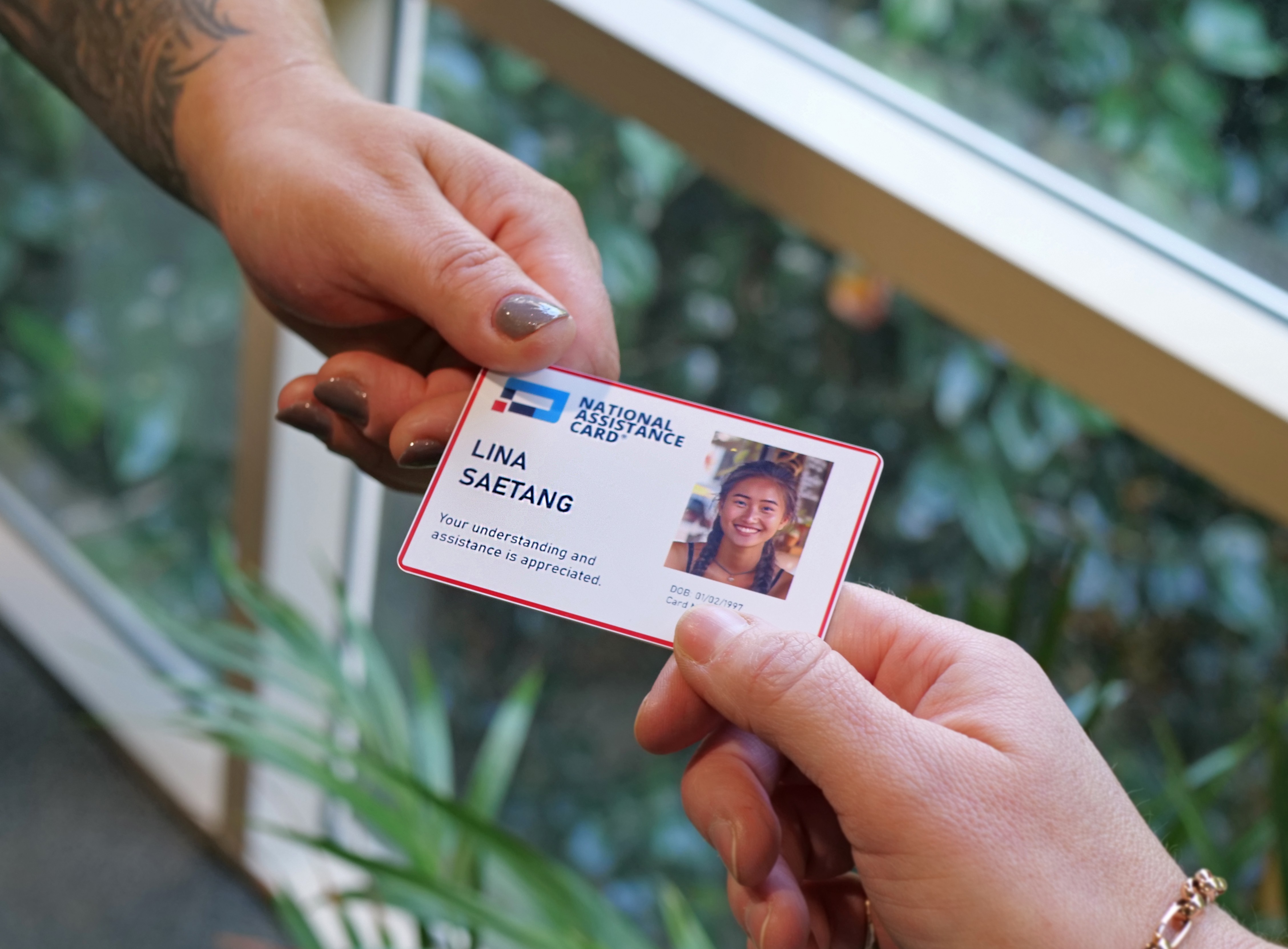Learn more about how the National Assistance Card can support students with disability by helping schools foster inclusion, communication and personalised learning support.
Evidence shows that students with disability and their families often experience exclusion in Australian schools. For example, a 2016 Australian survey found that more than 70% of families of students with disability had experienced gatekeeping or restrictive practices in schools (Poed, Cologon & Jackson, 2020).
The Disability Standards for Education require that all Australian schools ensure that students with disability are able to access and participate in education on the same basis as students without disability, and provide reasonable adjustments for students where necessary to enable their access and participation.
The National Assistance Card is a valuable tool that helps teachers and school staff understand students' support needs. Understanding how the National Assistance Card works can make a real difference in ensuring students feel safe, supported, and ready to thrive.
You might be wondering what is the Card and who is it for?
The National Assistance Card is a personalised communication card that helps people explain their individual support needs in everyday life, at work, and in education settings.
For students, it provides a simple, respectful, and effective way to let teachers and peers know what kind of assistance helps them participate and succeed in learning.
You can learn more about the Card in our overview video in the player below:
The Card is currently available to autistic people and people with brain injury across Australia. Eligibility criteria and application details are outlined on the National Assistance Card website. You can keep up to date with eligibility at https://www.nationalassistancecard.com.au/eligibility
Key Features of the National Assistance Card

- Customisable Information – Students (with family support, if needed) can choose what details about their disability or health condition appear on the card.
- QR Code Profile – Each card includes a QR code linking to a secure personal profile, offering further details about the student’s support needs.
- Everyday Use – The Card can be used in classrooms, during school activities, or in emergencies.
How Schools and Teachers Can Support Students
There are a number of ways that school staff in particular can support students, particularly aided by the National Assistance Card, which include:
- familiarising yourself with the Card
- encouraging open communication
- respecting privacy and boundaries
- implementing support strategies
- regular check-ins
Let's explore each of these...
Familiarise Yourself with the National Assistance Card
It is important for teachers and school staff to have a clear understanding of what the National Assistance Card is, how it works, and the positive impact it can have on student wellbeing.
By exploring the National Assistance Card website and especially guides and resources page, staff can build confidence in using the card as part of inclusive teaching practice.
Awareness also helps schools create consistent approaches across classrooms, ensuring students feel respected and supported throughout their education journey.
Encourage Open Communication
Students should feel comfortable sharing their National Assistance Card if they choose.
Teachers can help by creating a respectful, open environment where students know the card will be used to support them.
Simple statements such as: “If you have a National Assistance Card, I’d be happy to see it so I can better understand how to support you.” show openness, trust, and willingness to adapt teaching strategies. Open communication also helps build stronger partnerships with families and carers.
Watch our short video below to see how to respond when someone shows you their National Assistance Card.
Respect Privacy and Boundaries
Every student has the right to choose how much information to share and with whom.
Teachers and school staff should respect confidentiality and only share National Assistance Card details with relevant staff members when the student and their family agree.
By maintaining privacy, schools foster trust and demonstrate respect for each student’s dignity and autonomy.
Implement Support Strategies
Once National Assistance Card information is shared, the next step is putting strategies into action.
Teachers can:
- Provide written instructions for lessons and assignments.
- Allow extra time for completing tasks.
- Offer a quieter workspace or noise-reducing tools.
- Check in discreetly to ensure support is effective and not intrusive.
Practical, personalised adjustments like these can make a big difference to a student’s confidence and learning.
Regular Check-Ins
Support needs may change over time. Schools can schedule regular check-ins with students and families when appropriate, to review strategies and adapt as required.
These reviews are an opportunity to strengthen communication, celebrate progress, and ensure the student’s needs are being met.
How to Raise Awareness in Your School Community
Teachers and schools play a key role in raising awareness of the National Assistance Card and encouraging its use across the education community.
Some steps include:
- Hosting staff information sessions to increase understanding of the National Assistance Card and other support tools.
- Providing resources such as brochures and posters in staff rooms, libraries, and noticeboards.
- Sharing information with parents and carers through newsletters and parent meetings.
By raising awareness, schools not only support students who already use the National Assistance Card - they also help families discover how it could benefit them.
Helpful Resources
Schools and teachers also don’t have to navigate this alone. A range of official resources are available to guide understanding and practice:
- Visit the guides and resources page for the National Assistance Card
- The digital library contains a range of videos, flyers and additional resources
- Department of Education (State/Territory websites) – Offer curriculum guides, policy updates, and professional development resources.
- Australian Curriculum, Assessment and Reporting Authority (ACARA) – Provides curriculum content, assessment advice, and learning resources.
- NDIS (National Disability Insurance Scheme) Resources for Schools – Offers guidance on supporting students with disabilities.
By learning about the National Assistance Card, encouraging open communication, respecting privacy, and implementing effective strategies, schools can create an environment where every student feels valued and understood.
You can explore the National Assistance Card website to learn more and explore how your school can support students through the Card.
References
Poed, S, Cologon, K, & Jackson, R 2020, ‘Gatekeeping and restrictive practices by Australian mainstream schools: results of a national survey’, International Journal of Inclusive Education, pp. 1–14, <https://doi.org/10.1080/13603116.2020.1726512>




